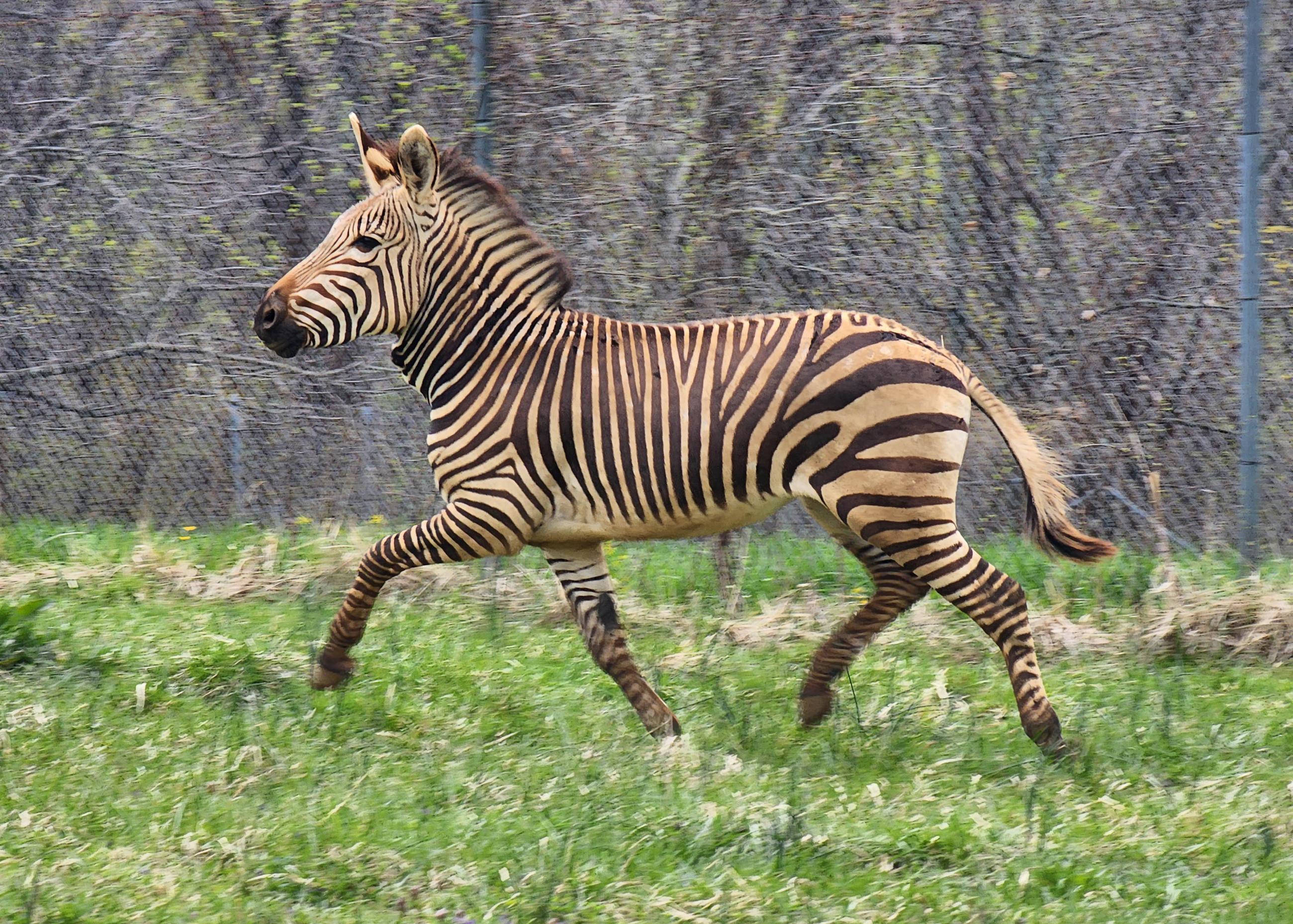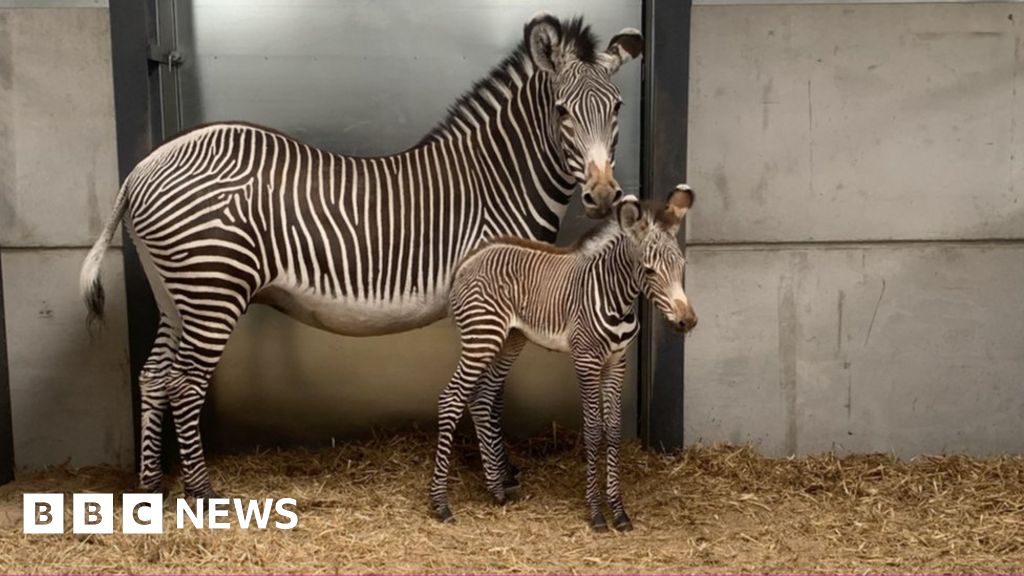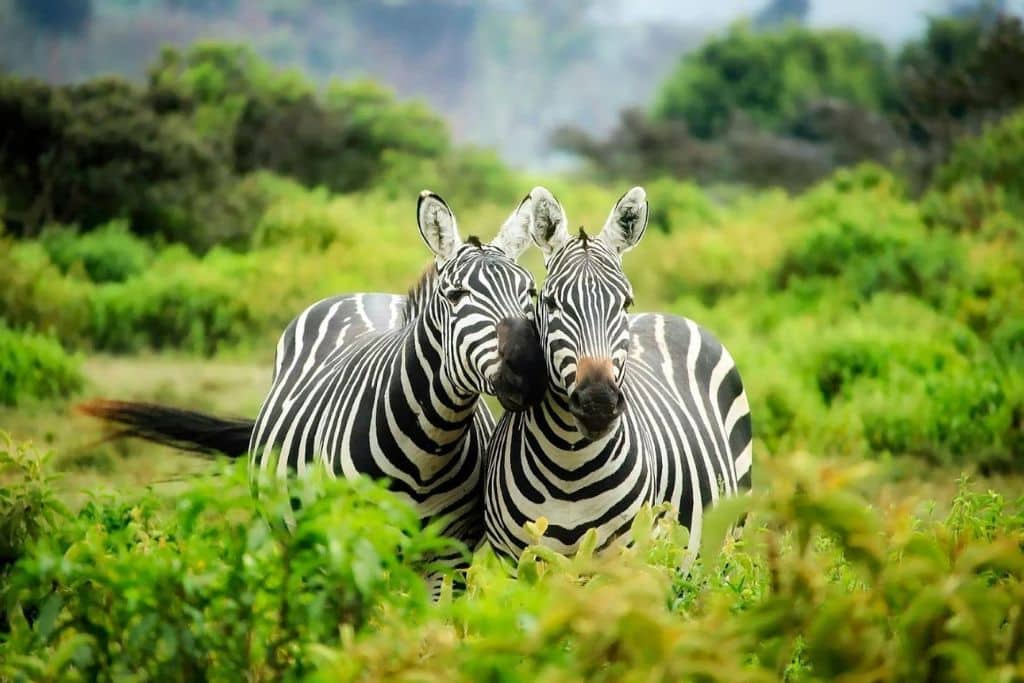The Zebra: A Striped Symphony of Nature
 In the vast tapestry of Earth's wildlife, few creatures are as iconic and captivating as the zebra. With their distinctive black and white stripes, these majestic animals roam the grasslands of Africa, captivating the imagination of humans for centuries. But beyond their striking appearance lies a rich tapestry of biology, behavior, and cultural significance that makes the zebra a truly fascinating subject of study. In this exploration, we delve into the world of zebras, uncovering the secrets of their stripes, their social dynamics, their role in the ecosystem, and their enduring place in human culture.
In the vast tapestry of Earth's wildlife, few creatures are as iconic and captivating as the zebra. With their distinctive black and white stripes, these majestic animals roam the grasslands of Africa, captivating the imagination of humans for centuries. But beyond their striking appearance lies a rich tapestry of biology, behavior, and cultural significance that makes the zebra a truly fascinating subject of study. In this exploration, we delve into the world of zebras, uncovering the secrets of their stripes, their social dynamics, their role in the ecosystem, and their enduring place in human culture.
The Origin of Stripes:
The most striking feature of zebras is, without doubt, their black and white stripes. Yet, the evolutionary purpose of these stripes has long puzzled scientists. Various theories have been proposed, ranging from camouflage to temperature regulation and even to social signaling. Recent research suggests that the primary function of zebra stripes is to repel biting insects such as flies and mosquitoes. The disruptive patterns created by the alternating black and white stripes confuse these insects, making it difficult for them to land on the zebra's skin. This adaptation is especially crucial in the hot and humid climates where zebras typically reside.
Social Structure and Behavior: Zebras are social animals, living in groups known as herds. Within these herds, there is a complex social structure, with dominant individuals asserting their authority over others. The social dynamics within a zebra herd are intricate, with constant communication through vocalizations, body language, and grooming rituals. One of the most fascinating aspects of zebra behavior is their synchronized movements during migration or when faced with predators. This coordinated behavior serves as a defense mechanism, making it harder for predators to target individual zebras within the herd.
Zebras are social animals, living in groups known as herds. Within these herds, there is a complex social structure, with dominant individuals asserting their authority over others. The social dynamics within a zebra herd are intricate, with constant communication through vocalizations, body language, and grooming rituals. One of the most fascinating aspects of zebra behavior is their synchronized movements during migration or when faced with predators. This coordinated behavior serves as a defense mechanism, making it harder for predators to target individual zebras within the herd.
Ecosystem Engineers:
Zebras play a vital role in the ecosystems they inhabit. As herbivores, they graze on grasses and other vegetation, shaping the landscape and promoting biodiversity. By consuming certain plant species and fertilizing the soil with their droppings, zebras contribute to the health of their environment. Furthermore, their interactions with other herbivores, such as wildebeests and antelopes, create a balance that supports a wide array of plant and animal species. In this way, zebras can be considered as "ecosystem engineers," shaping the habitats they inhabit in profound ways.
Cultural Significance: Throughout history, zebras have captured the imagination of humans across the globe. In African cultures, zebras are revered as symbols of beauty, strength, and freedom. They feature prominently in folklore, art, and traditional ceremonies. In Western societies, zebras have become icons of exoticism and adventure, often depicted in literature, film, and fashion. The black and white stripes of the zebra have inspired artists, designers, and scientists alike, leaving an indelible mark on human culture.
Throughout history, zebras have captured the imagination of humans across the globe. In African cultures, zebras are revered as symbols of beauty, strength, and freedom. They feature prominently in folklore, art, and traditional ceremonies. In Western societies, zebras have become icons of exoticism and adventure, often depicted in literature, film, and fashion. The black and white stripes of the zebra have inspired artists, designers, and scientists alike, leaving an indelible mark on human culture.
Conservation Challenges:
Despite their cultural significance and ecological importance, zebras face numerous threats to their survival. Habitat loss, poaching, and competition with livestock for resources are among the primary challenges confronting zebra populations. Additionally, climate change poses a significant threat, altering the availability of water and food in their habitats. Conservation efforts aimed at protecting zebras and their habitats are therefore crucial for ensuring their survival in the face of these challenges.
The zebra stands as a symbol of the beauty and complexity of the natural world. From their enigmatic stripes to their intricate social dynamics, zebras captivate our imagination and inspire wonder. As we strive to understand and protect these magnificent creatures, we gain insight into the interconnectedness of all life on Earth. Through conservation efforts and continued research, we can ensure that zebras continue to roam the grasslands of Africa for generations to come, enriching our world with their presence and reminding us of the importance of preserving biodiversity.
Behavior and Social Structure:
Zebras are highly social animals, forming tight-knit groups known as herds. These herds are typically led by a dominant stallion, who is responsible for protecting the group and maintaining order. Within the herd, there is a complex social hierarchy, with individuals forming strong bonds through grooming, mutual grooming, and other forms of social interaction.
Interestingly, zebras also exhibit a behavior known as "mobbing," where they collectively confront predators, such as lions or hyenas, in an attempt to drive them away. This cooperative behavior enhances their chances of survival, as predators are less likely to attack a large, united group.
Reproduction and Life Cycle:
Zebras typically mate during the rainy season, when food is abundant. After a gestation period of around 12 months, a female zebra gives birth to a single foal, which can stand and walk within minutes of being born. The mother fiercely protects her foal from predators, and the young zebra remains close to her side for several months until it is old enough to join the herd.
As the foal grows, it learns essential survival skills from its mother and other members of the herd. By the age of two, it reaches sexual maturity and may leave the maternal group to join a bachelor group or establish its own territory.
Cultural Significance:
Zebras have captivated human imagination for centuries, appearing in art, literature, and folklore around the world. In African cultures, zebras are often revered for their strength, resilience, and beauty, symbolizing freedom and the untamed wilderness. Additionally, their striking appearance has inspired fashion designers, artists, and filmmakers, who incorporate zebra motifs into their work.
Furthermore, zebras play a vital role in ecotourism, attracting visitors to national parks and wildlife reserves across Africa. Tourists flock to see these magnificent animals in their natural habitat, contributing to local economies and conservation efforts.
Conservation Challenges:
Despite their cultural significance and ecological importance, zebras face numerous threats in the wild. Habitat loss, poaching, and competition with livestock for resources are among the primary challenges facing zebra populations. Additionally, climate change poses a growing threat, altering the distribution of vegetation and water sources in their habitats.
Conservation organizations are working tirelessly to protect zebras and their habitats through initiatives such as habitat restoration, anti-poaching patrols, and community outreach programs. However, concerted efforts are needed to ensure the long-term survival of these iconic animals.












































